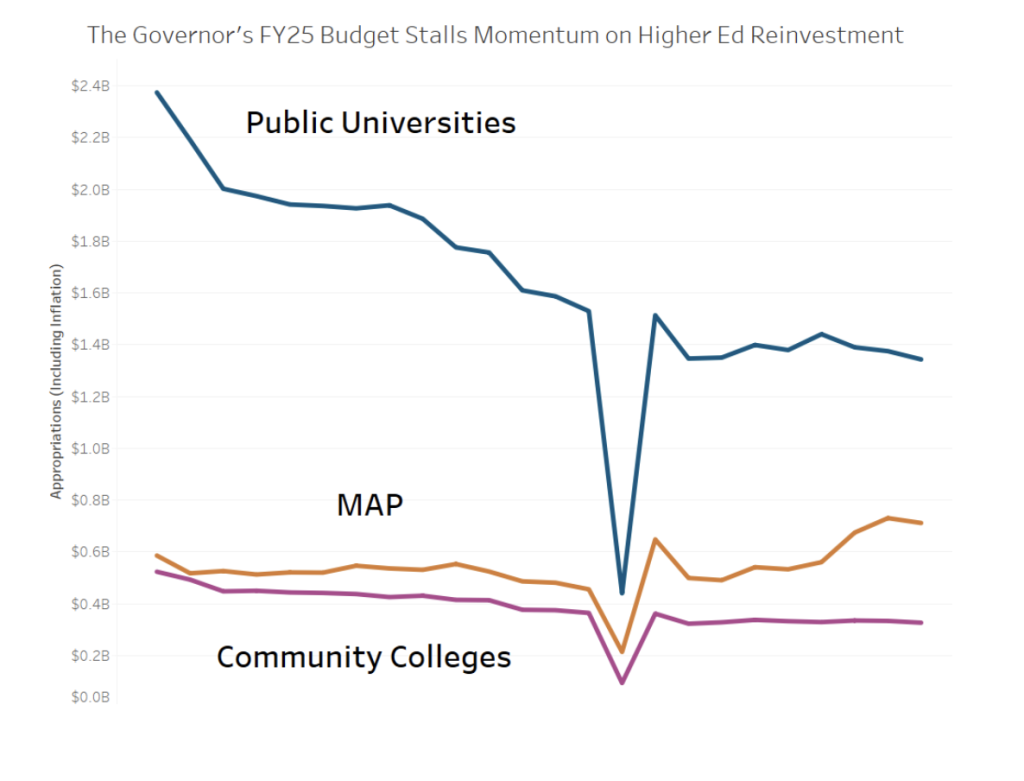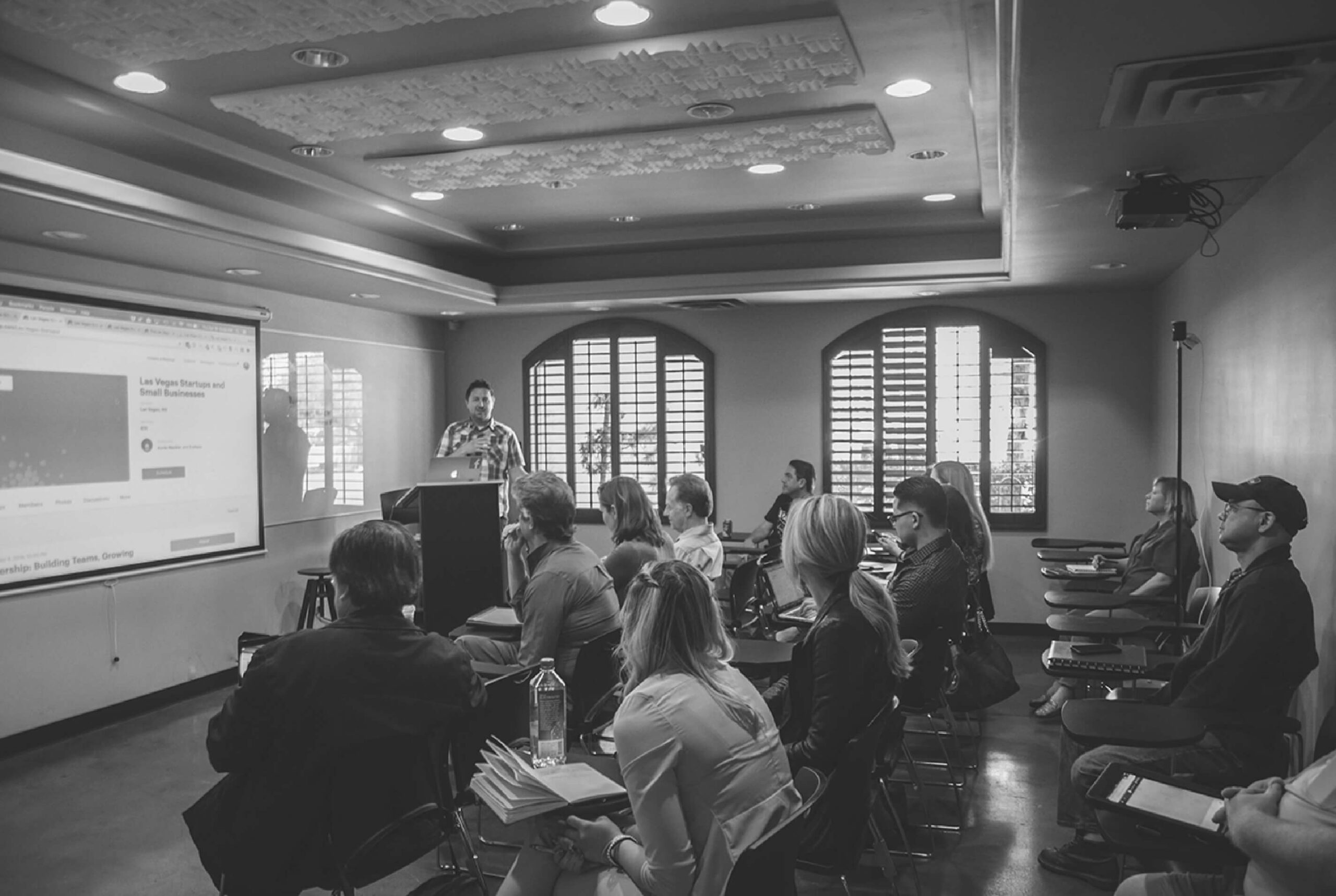After three years of significant investment into the Monetary Award Program (MAP) and historic increased appropriations to state universities, the Partnership for College Completion (PCC) is disappointed to see a proposed FY25 state budget that offers a weak across-the-board increase in state appropriations and a MAP increase that does not keep up with inflation. We appreciate Governor JB Pritzker’s commitment to making higher education affordable and accessible in recent years, but unfortunately, this year’s budget will not move this critical work forward. The health and equity of Illinois’ future economy is dependent upon equitably educating Illinois residents, which can only be achieved through bold and impactful investment.
The proposed increases to higher education for FY25 are small and will not keep up with inflation or serve all students in need. MAP grants will be increased by $10 million, which could mean lower aid amounts or low-income applicants once again denied grants. Meanwhile, public colleges and universities received a two-percent, across-the-board increase, which does nothing to recognize existing inequities in the way we distribute funding to our public universities. Community colleges will only receive an additional $6.2 million, representing a two-percent increase in overall appropriations based on the previous years, a meager amount when considering the $637 million annual deficit, which has been building over the last two decades. As such, Illinois’ two and four-year systems are in urgent need of additional funding to address issues of college access, affordability, persistence and completion.

Pritzker’s last state budget for FY24 brought a historic 12.4 percent increase in higher education funding, including an additional $100 million for MAP and $80 million more for public universities. Community colleges also received $19.4 million more in funding. The FY25 budget paints a different picture and unfortunately stalls some of the momentum built over the last five years, which is needed to ensure continued positive growth for postsecondary students after two decades of decline. To ensure more students receive the funding they need to pay for their education, an investment of at least $50 million into MAP is necessary to maintain college affordability for Illinois students. The state legislature must step up to ensure MAP’s continued success in increasing college access for low-income students.
In addition to funding MAP, the state can support higher education through equitably funding our public four-year colleges and universities. The Commission on Equitable Higher Education Funding, co-chaired by Senate Majority Leader Kimberly Lightford and Representative Carol Ammons, will soon release recommendations on a new state funding formula to equitably, adequately and stably fund public universities in the state. This is the final, critical missing piece that connects our entire education ecosystem from preschool through to the workforce. Illinois needs an equity and evidence-based funding formula for its public universities. The state must then commit to building a ramp to full funding for both our public university and community college systems for equity, which has also been underfunded by hundreds of millions of dollars in the past two decades.
“Two decades of disinvestment and the years of the budget impasse were very dark years for college students, and the colleges and universities that serve them. In the last three years we have seen some reinvestment in state appropriations to higher education and big new investment in MAP grants, Illinois’ need-based aid program, but we need to keep going,” said Lisa Castillo Richmond, PCC Executive Director. “This governor has done great things for higher ed, but we have a lot of work that remains and we think that he can be the one to get the job done.”
FY25 Higher Education Budget Highlights
- An increase of $10 million for the MAP totaling $711.6 million. This proposed funding represents a 1.4 percent increase from FY24. Though since 2019, there has been a $310 million (77 percent) increase
- A $30.6 million, or 2 percent, general funds increase for public universities ($24.6 million) and community colleges ($6 million) operating costs
- Maintains funding for grant programs such as dual-credit initiatives, Diversifying Higher Education Faculty in Illinois (DFI), and Minority Teachers of Illinois (MTI)
- $450,000 to extend the Common Application simplified admissions process to transfer students
- $450,000 to create a public-facing, interactive, transparent, and accountability tool to demonstrate institutional progress toward student retention, graduation, and equity
Read PCC’s press release on the FY25 budget proposal here.

